
Konya is one of the most interesting and beautiful cities in Turkey, the city center is a showcase of Turkey, full of Ottoman and Seljuk monuments. It is worth remembering that religious conservatism prevails in Konya. Religious precepts are particularly strongly observed here. The premises close much earlier and alcohol can be purchased only in a few places. Moreover, you can see women covered from head to toe on the streets. When deciding to visit local monuments, remember to wear appropriate clothing that covers your hands and knees. For women, headgear is also important. Nevertheless, Konya is a place that you must visit if you want to get to know Turkish and Seljuk culture. Local mosques and the Dancing Dervish Festival these are unique attractions.

Konya is a city in southern Turkey, on the Anatolian Plateau, at the foot of the northern part of the Taurus Mountains, the capital of Konya Province.
What is worth seeing in Konya ?
Mevlâna Museum


The Mevlana Museum is dedicated to the 13th-century philosopher, poet and religious leader Jalal ad-Din Muhammad Rumi, also known as Mevlana or Rumi. The site is also important to the Mevlevi Sufi Dervish Order, founded by Rumi. The museum is one of the most visited attractions. The building is topped with a magnificent gold-plated turbine, a wonderful example of the architecture of this extraordinary place. Inside, the tombs are covered with rich gilded carpets, the finest of which comes from Rumi.
Aziziye Mosque
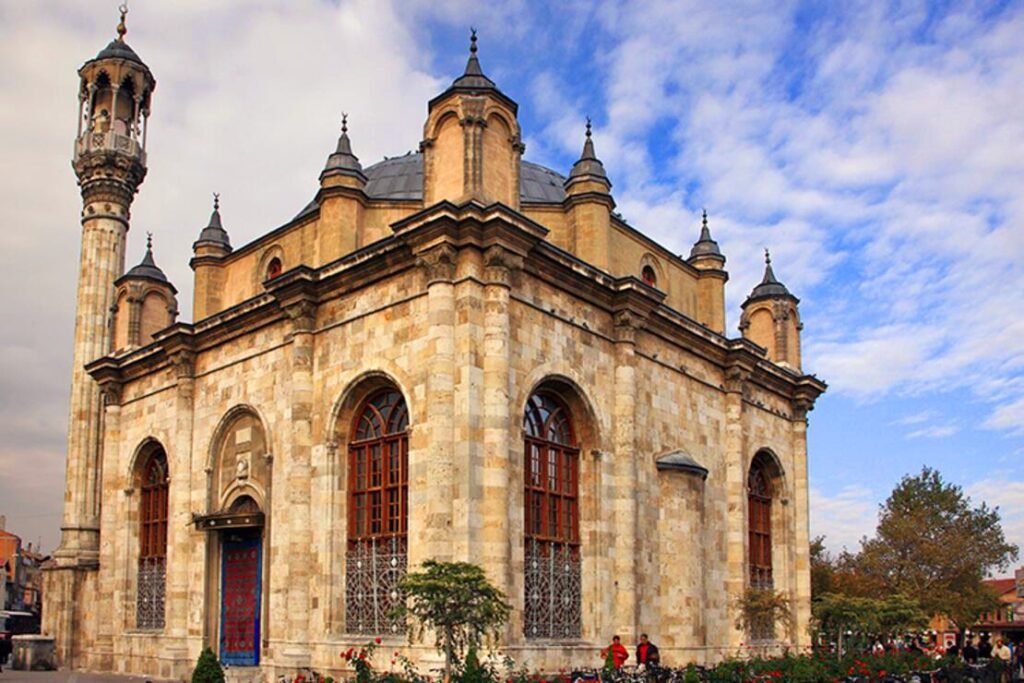
The Aziziye Mosque in Konya is a testament to Turkey’s rich Ottoman heritage. Beyond its architectural charm, the Aziziye Mosque remains a focal point of the local community’s spiritual life, providing a space for prayer and meeting.
Alaaddin Hill Park

Alaaddin Hill Park area with historical monuments located in the central part of Konya. It is a very interesting place that attracts tourists. It is also an ideal place to relax and unwind in the bosom of nature. It is also worth paying attention to the extensive and individual forests scattered throughout the park. A perfect location for guests interested in the region and its cafes and restaurants.
Alaaddin Keykubad Mosque
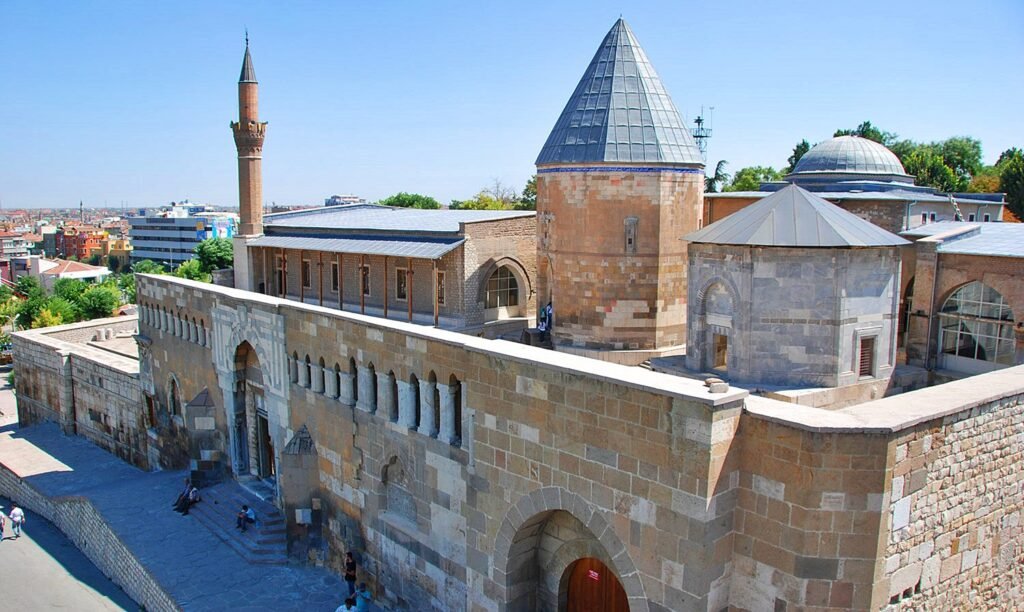
Alaaddin Keykubad Mosque– It is built into the hill that forms the citadel of Konya; its pointed arch and round domes atop two tombs are prominent features in Konya’s cityscape. With the exception of Izzeddin Keykawus, all of the Seljuk sultans after 1156 are interred in the complex. Its oblong, hypostyle plan is influenced by Arabic classical architecture, but it is very much a Seljuk building.
Kapu Mosque


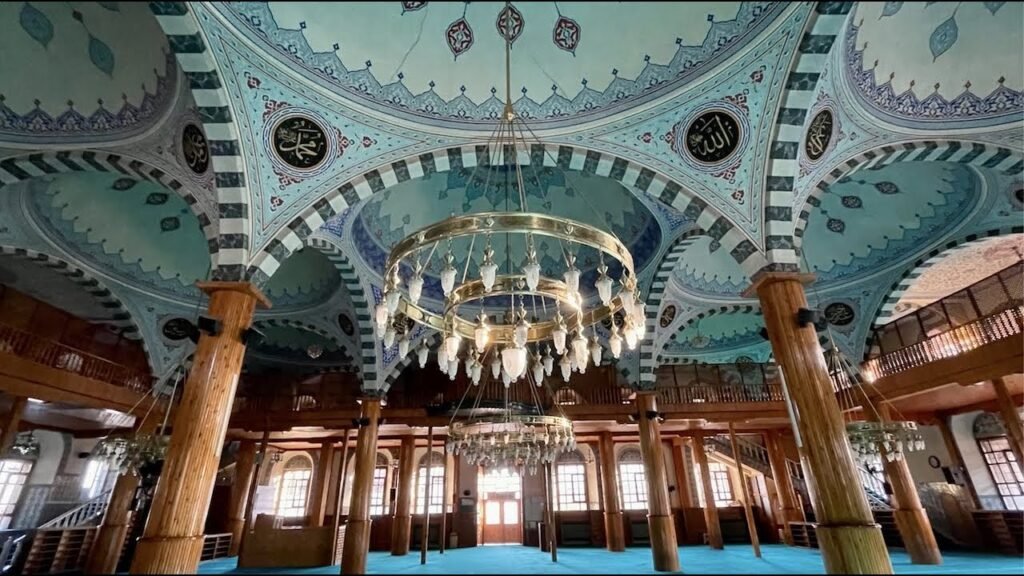
The mosque is located on Tevfikiye Street in the center of Konya. Because it is located around one of the doors of the old Konya Castle, it is called the Kapu Mosque. The mosque was first built in 1658 by Pir Hüseyin Çelebi, who was one of the sheikhs of the Mevlevi lodge. This mosque was destroyed after some time and rebuilt many times. The Kapu Mosque is the largest of the Ottoman-era mosques in Konya.
Panorama of Konya Müzesi

Konya Panorama Museum is Turkey’s second domed panoramic, transports tourists to Konya in the 1200s with its 360-degree domed panorama. The museum’s goal is to introduce Mevlana to tourists and to explain the influence he and his family had on Konya at the time.
KONYA MERAM BAĞLARI
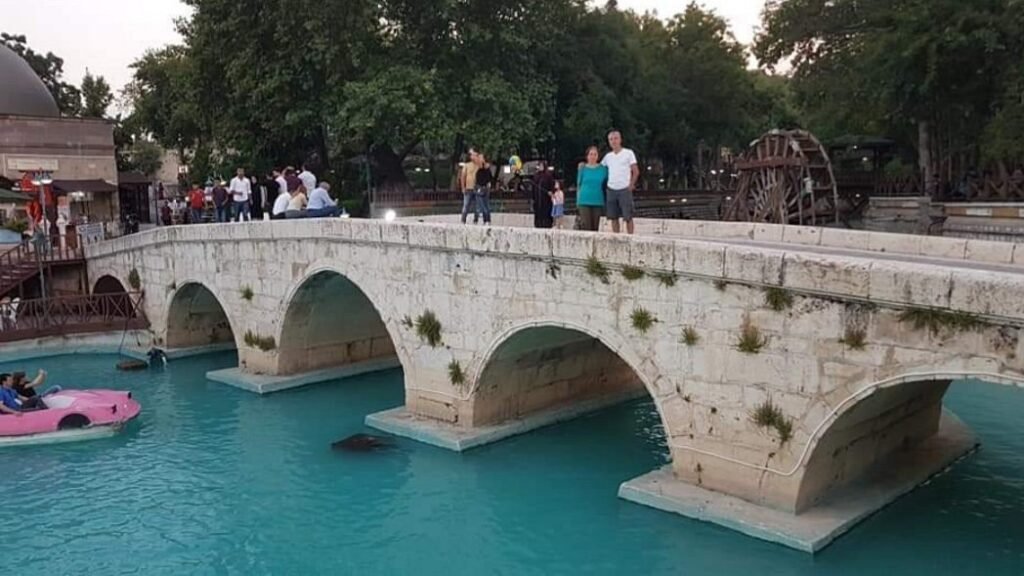
Meram was founded in a valley at the southeastern foot of Mount Takkeli. Eski Meram vineyards, 5-6 km from the city. It starts from the west and ends with a green valley reaching to the stream. Throughout history, its water, air and vineyards have been the subject of travel books and couches, and its fame has spread throughout the world. Today it is a beautiful recreational area surrounded by forests. There are also tea gardens and restaurants here. in Meram; You can visit the Meram Bath, Meram Bridge, Tavus Baba Tomb, Hasbey Masjid and Dârü’l-Huffâzı, which were built during the Seljuk period.
Karatay Madrasa
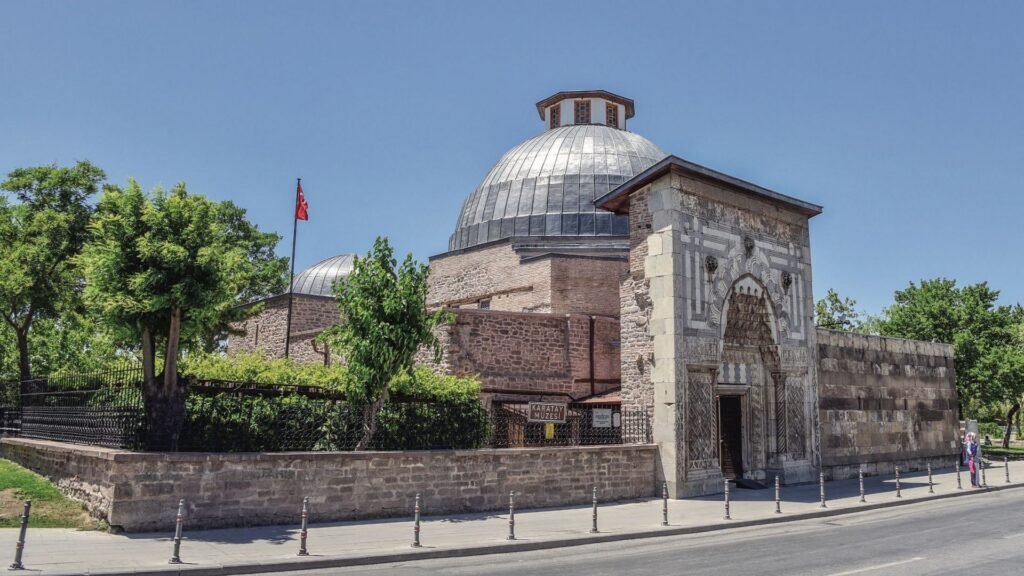
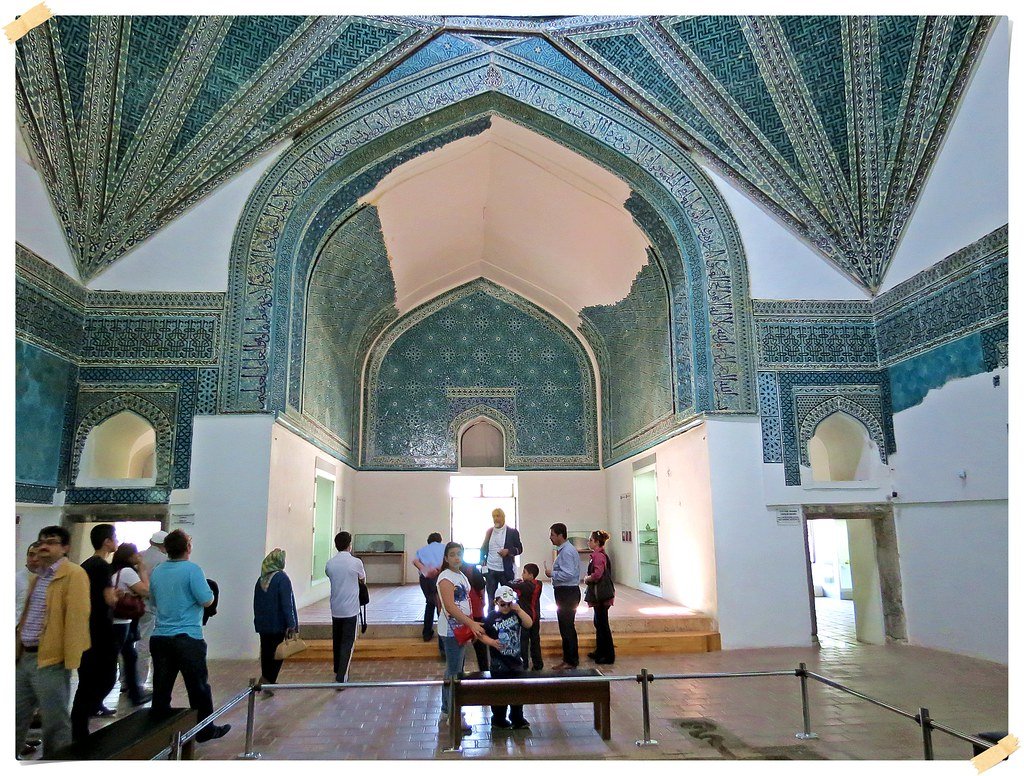
The Karatay Madrasa is a historical structure , located in the Karatay district, Ferhuniye Neighborhood, Adliye Boulevard in Konya. It was constructed during the reign of II. İzzeddin Keykavus, between the years 1250-1251. This historical site offers a glimpse into the architectural style and educational practices of the Seljuk era.
Çatalhöyük

Neolithic Site of Çatalhöyük – Two hills form the 37 ha site on the Southern Anatolian Plateau. The taller eastern mound contains eighteen levels of Neolithic occupation between 7400 bc and 6200 bc, including wall paintings, reliefs, sculptures and other symbolic and artistic features. The western mound shows the evolution of cultural practices in the Chalcolithic period, from 6200 bc to 5200 bc.
Kyoto Japanese Park

In the very center of Konya there is a hidden gem that arouses the curiosity of visitors – Kyoto Japanese Park. Thanks to the peaceful atmosphere, delicious morning breakfasts and a bit of Japanese culture, the park is becoming famous. The park covers an area of approximately 36,000 square meters and its central point is a beautiful lake with swans and ducks swimming on it. The Japanese style definitely distinguishes this park, many tourists take photos here, as well as students of Selçuk University.
Around the World in 80 Thousand Park
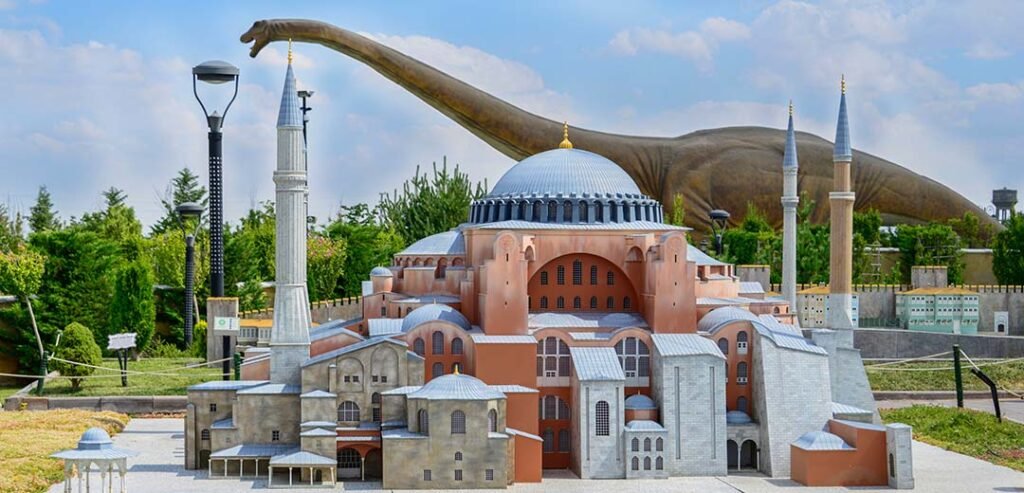

Around the World in 80 Thousant Park is a very popular amusement park with three different concepts. The park, which is the first in Turkey, features 120 miniature works and 50 moving and audible dinosaurs. The miniatures include miniatures of 120 works, from the Mostar Bridge in Bosnia and Herzegovina to iconic works of Istanbul, the Haydarpaşa Railway Station, the Virgin Tower and the Hagia Sophia Mosque, to a miniature of the 10,000-seat Kalon Mosque in Bukhara at the exhibition. The dinosaur park presents models of dinosaurs such as: “the winged lizard “Pterosaur”, whose wingspan can reach up to 7 meters, “Ankylosaurus”, whose biggest weapon is a club with a hard tail, “T-Rex” and “Spinosaurus”. , the largest known predator, Seismosaurus, a gigantic herbivore that can reach 45 meters in weight and 90 tons, takes guests on a prehistoric journey.
Stille
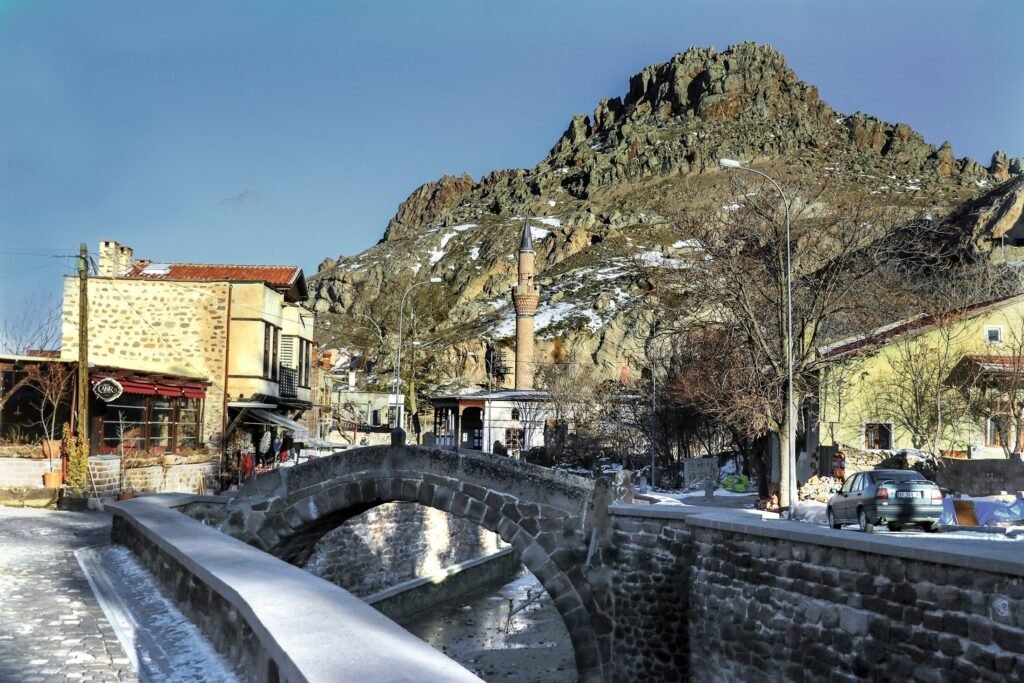
Sille Subaşı is a small village near the city of Konya. The streets of the village are lined with wooden beams, which gives it a unique character. There are two Byzantine churches here: Church of St. Helena with an interior covered with colorful frescoes. Küçük Kilise – currently a museum of clocks and watches.
Göreme
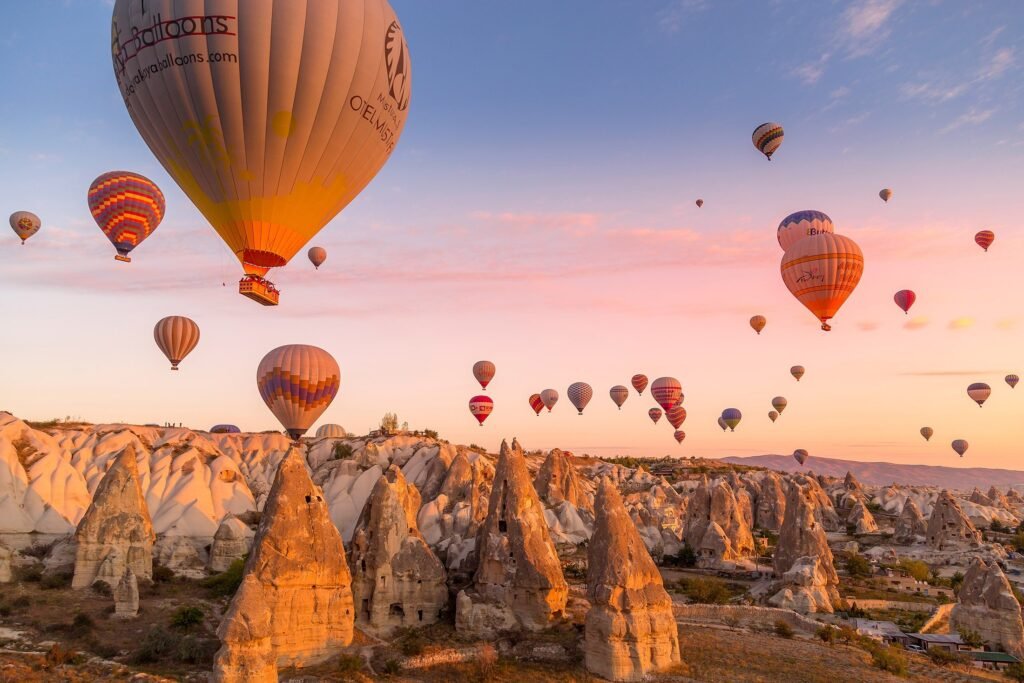
A little further from Konya lies the city of Göreme with a spectacular landscape, completely carved by erosion, the Göreme valley and its surroundings with sanctuaries carved in stone, are unique examples not only of Byzantine art but also of human settlements from the Paleolithic period. Here you can admire both underground cities – remains of traditional human habitats, as well as Byzantine churches carved in the rocks, decorated with frescoes, and the Ortahisar fortress carved in the rock.
Balloon flights are popular in this area. The balloons take off from several places, all of them located in the valleys around the city of Göreme. It’s an amazing feeling when we can watch dozens of balloons flying above the fossils.
